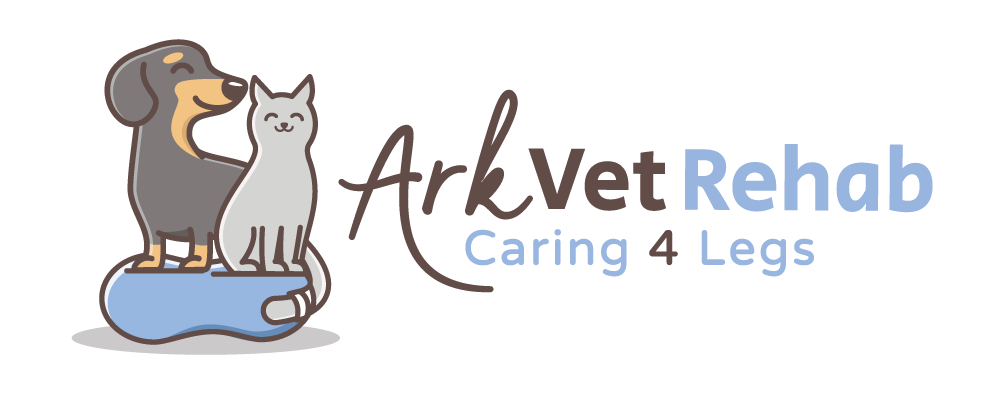1. Front Feet on a Balance Pad (Engaging Core + Shoulder Stability)
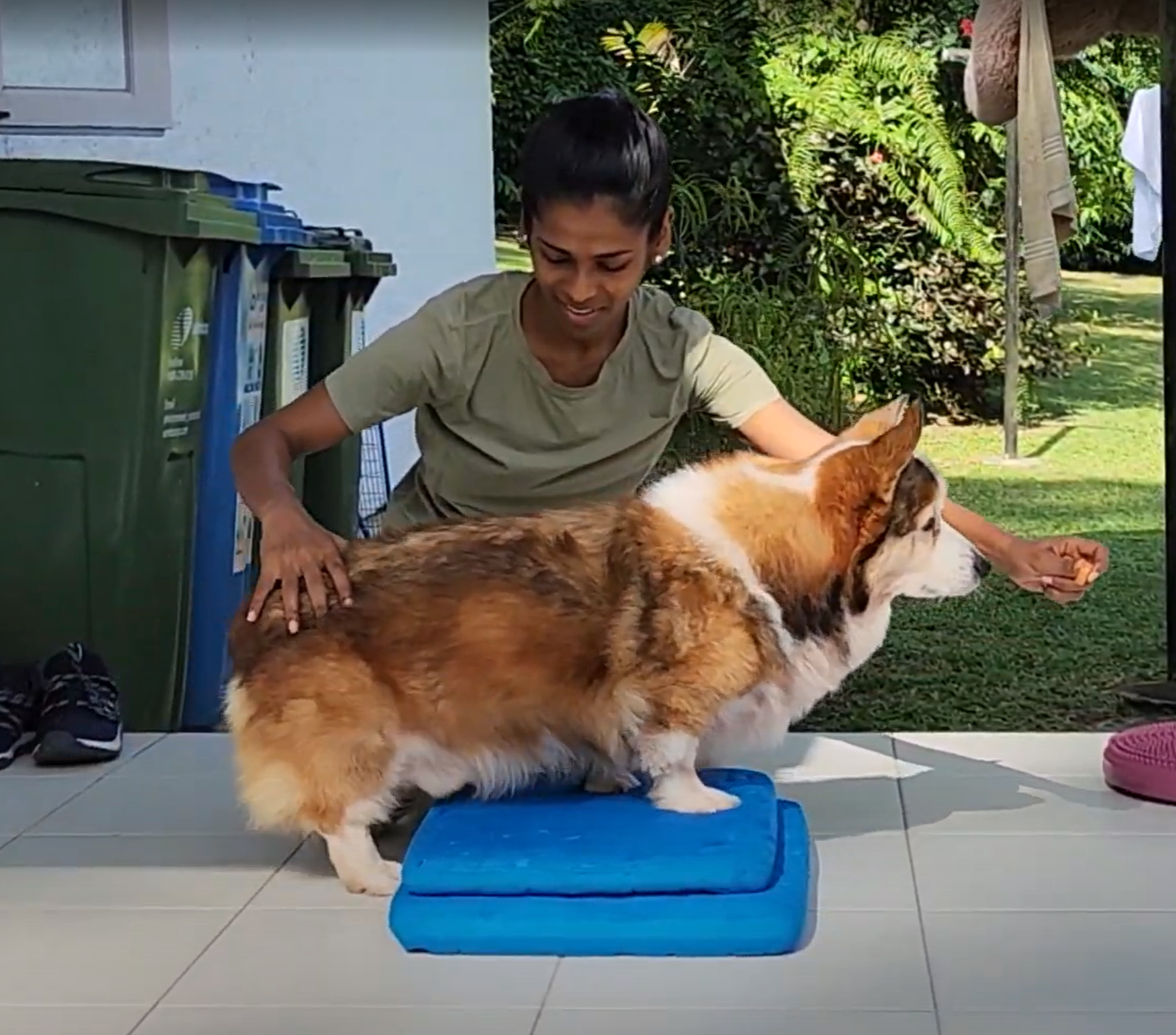
- Place your dog’s front paws on a balance pad or firm cushion while keeping their back paws on the ground.
- Use a treat to guide their head slightly side-to-side and up-and-down.
- Watch their posture: keep the spine level, shoulders square, and avoid leaning.
- This helps activate their core and shoulder stabilizers.
- Repeat the exercise with the hindlimbs on a balance pad.
- Repeat the movement by replacing the balance pads with a balance cushion.
Tip:
- If your dog struggles, start with something firm (like a yoga mat folded over) and progress to softer pads over time.
- Hold the dog treats close to their mouth so they don't lunge or charge forward quickly.
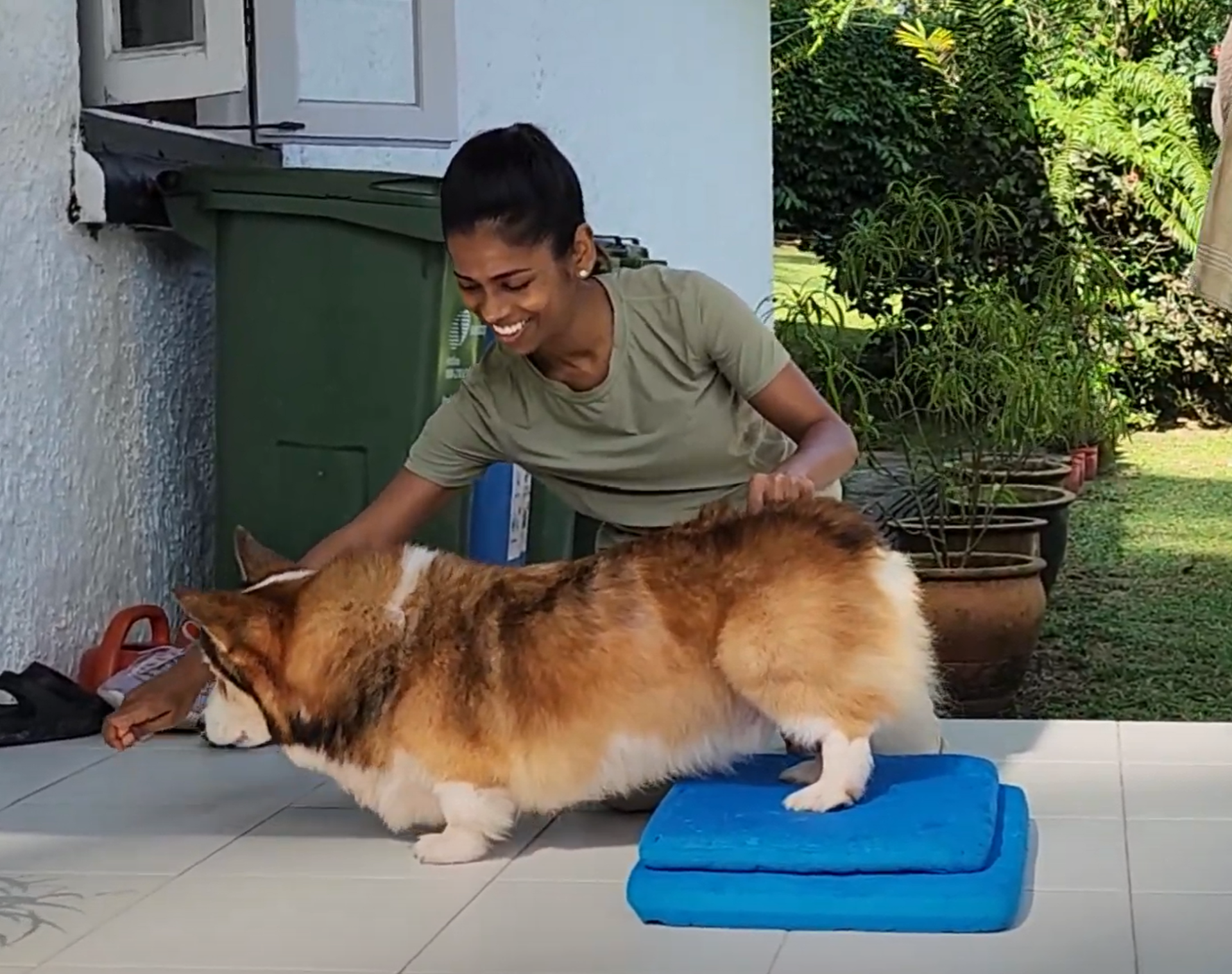
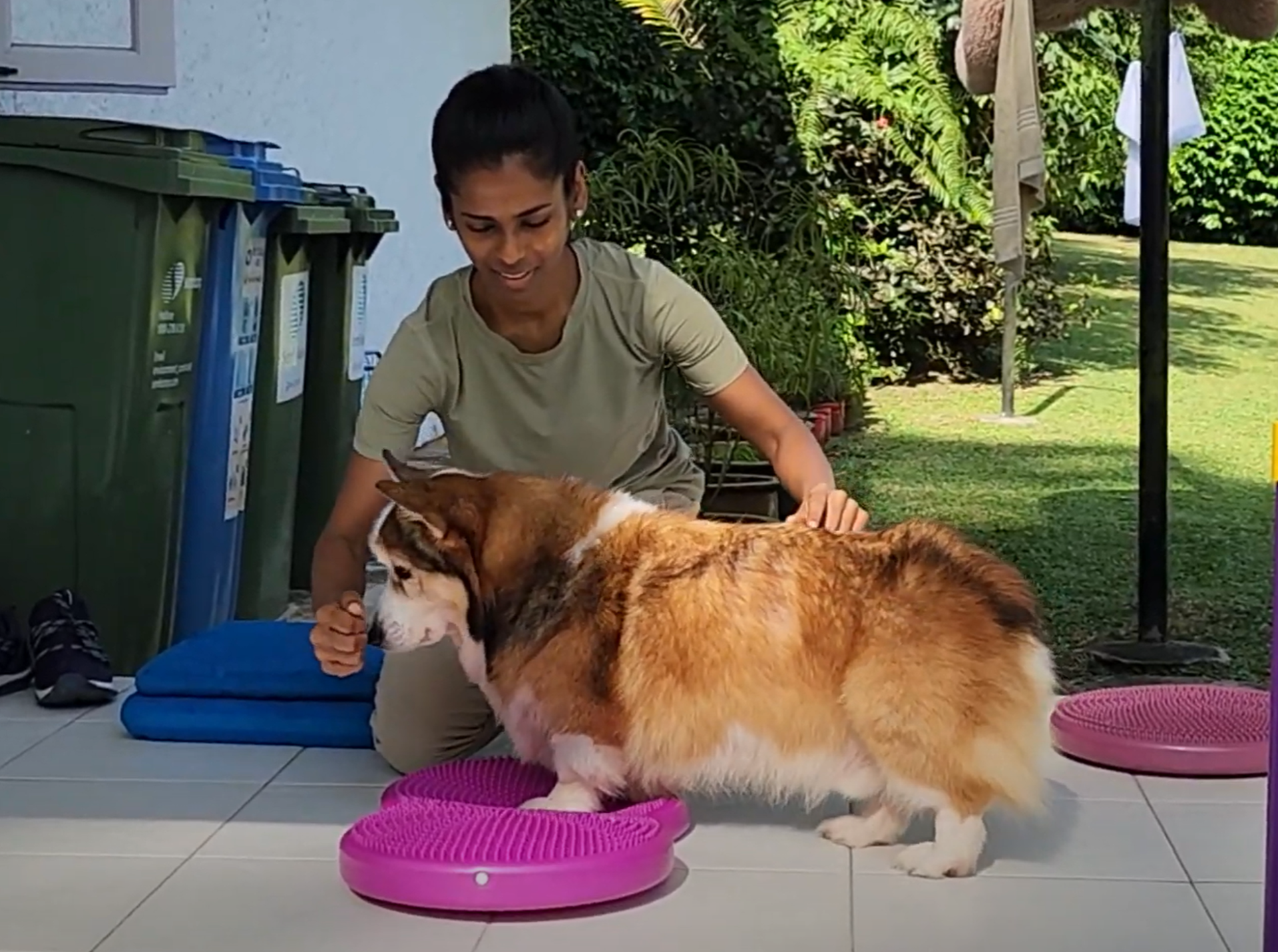
2. All Four Feet on a Balance Pad and Balance cushion (Full Body Engagement)
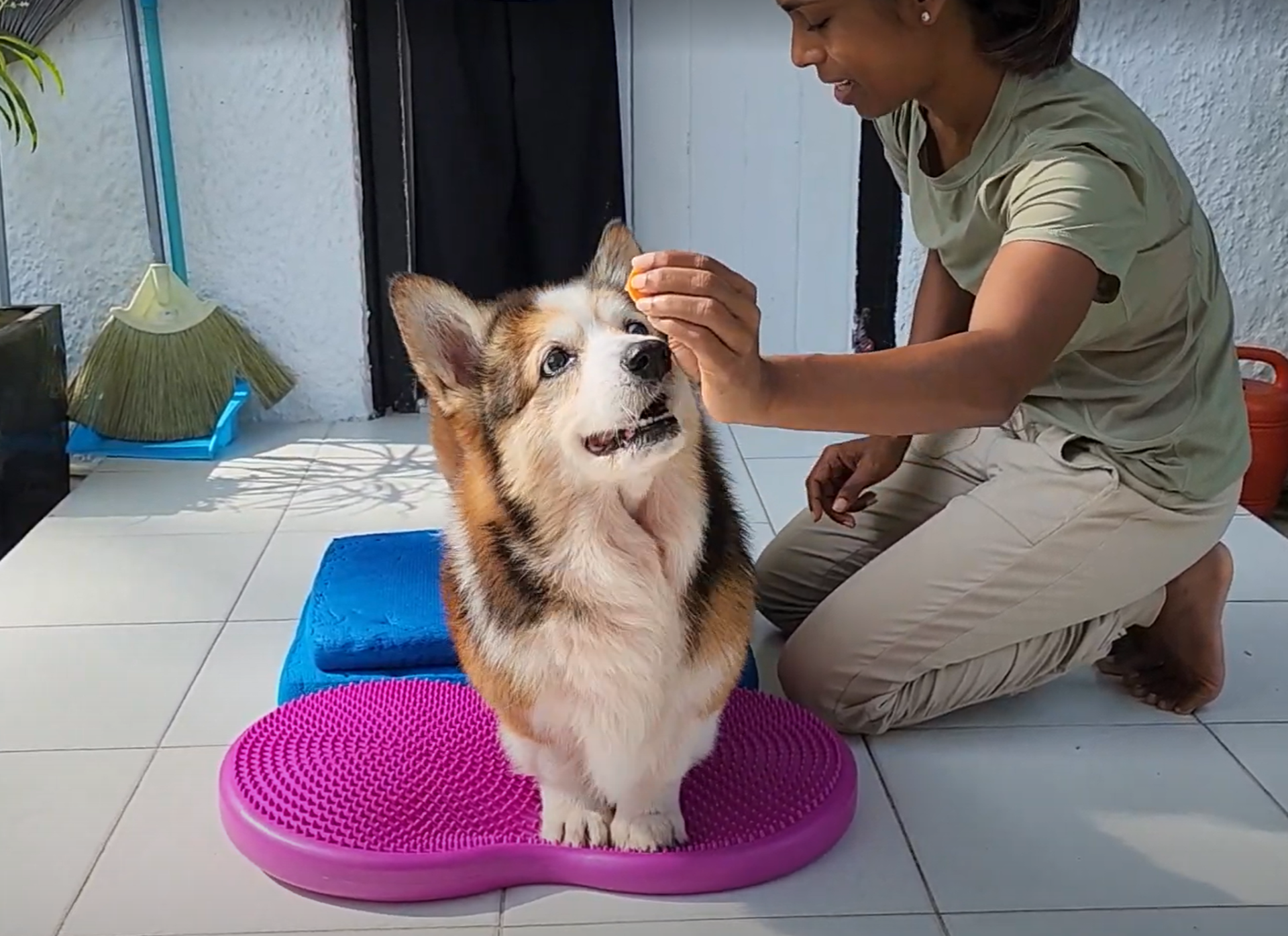
- Have your dog step up with all four paws with the front paws on one balancing surface and the hind paws on the other.
- Keep them standing tall: back straight, hips square, shoulders square, no slouching. Note the negative example in this image where the dog has the front paws close together creating a triangle shape rather than a square shape with the front limbs.
- Hold them steady if needed, and use a treat to keep their focus forward.
- This exercise improves coordination and strengthens stability muscles throughout the body.
Progression: Once they are steady, slowly lure their head in small arcs to the left and right. This challenges balance even more.
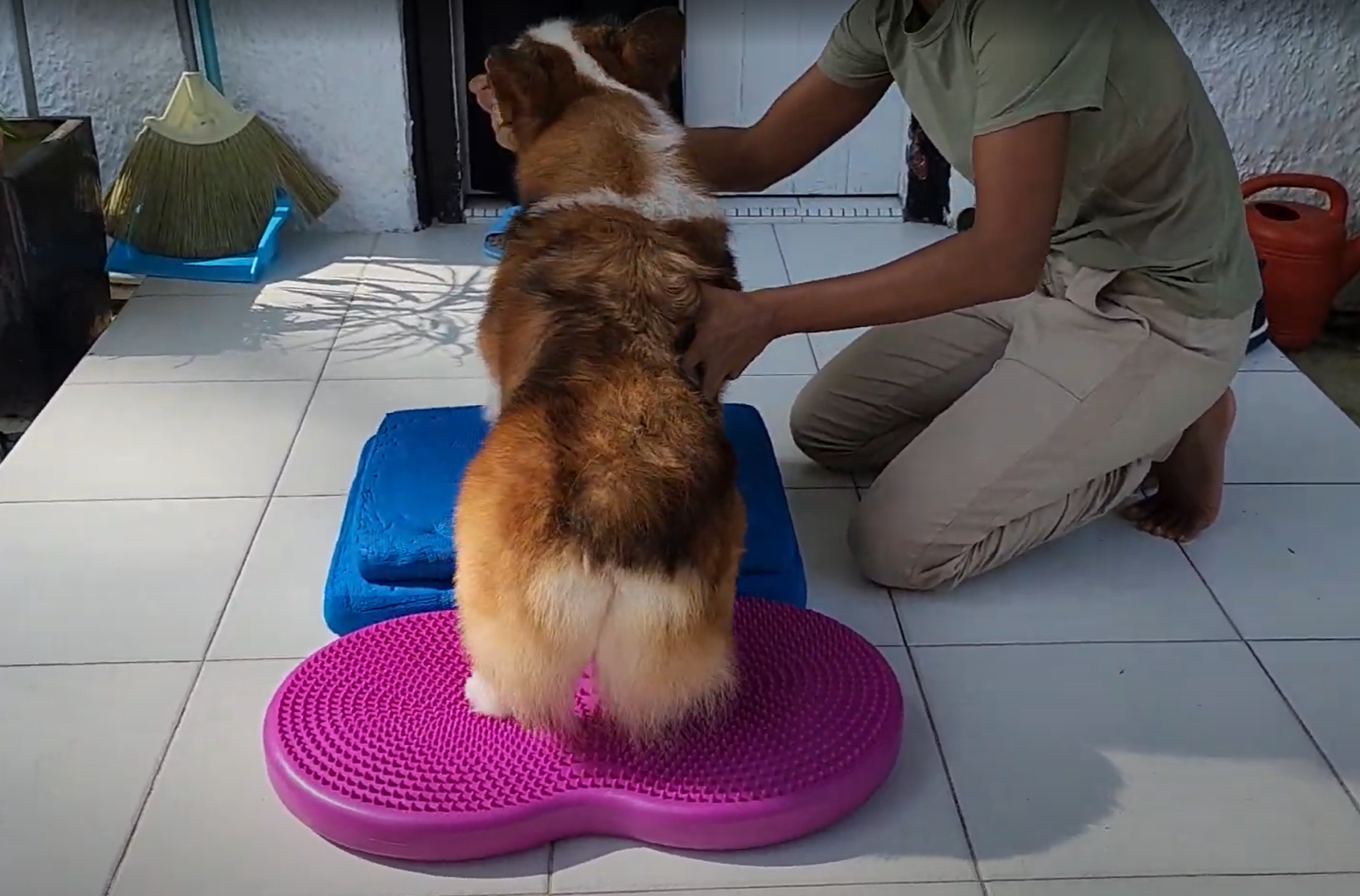
3. Sit-to-Stand on a Balance Surface (Core + Hind End Strength)
- Ask your dog to sit on the balance pad or the balance cushion.
2. Lure them gently into a stand, making sure they rise evenly with both back legs.
3. Repeat a few times, focusing on controlled movement rather than speed.
4. This strengthens the hind limbs and reinforces proper posture.
Watch out for:
- Leaning to one side
- Pushing up with only one back leg
- Rushing the movement

General Guidelines:
✅ Keep sessions short and positive — about 15 minutes.
✅ Aim for 3–4 times a week instead of daily to allow recovery.
✅ Always work on a non-slip surface.
✅ Reward generously — make it fun!
✅ If your dog struggles or shows signs of discomfort, stop and simplify.
✅ Keep sessions short and positive — about 15 minutes.
✅ Aim for 3–4 times a week instead of daily to allow recovery.
✅ Always work on a non-slip surface.
✅ Reward generously — make it fun!
✅ If your dog struggles or shows signs of discomfort, stop and simplify.

